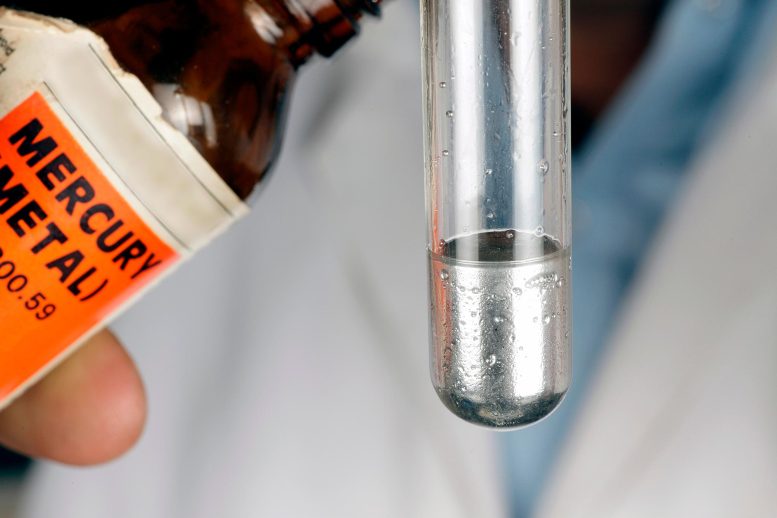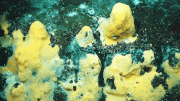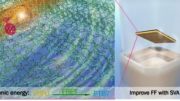
New research at Purdue University has revealed the presence of mercury in mongoose brains, suggesting a wider environmental impact and potential risks to human health. This groundbreaking discovery enhances our understanding of mercury’s neurotoxicity in terrestrial animals. Credit: SciTechDaily.com
Scientists uncovered mercury in mongoose brains, indicating a broader environmental threat and raising concerns about human exposure to mercury.
Exposure to mercury (Hg) is extremely neurotoxic in most chemical forms. Even scientists who study mercury compounds are at risk due to potential exposure to Hg. Renowned physicist Michael Faraday suffered from Hg poisoning due to prolonged exposure to Hg vapors, leading him to halt his research at the age of 49 due to deteriorating health. Another example is lab chemist Karen Wetterhahn who was killed by dimethylmercury poisoning after a few drops escaped from a pipette and landed on one of her latex-gloved hands.
Mercury in Marine and Terrestrial Life
Numerous studies have focused on the exposure and effects of Hg, particularly in marine and sea creatures. It is well-known that people should limit the consumption of certain fish, like tuna, due to mercury presence. However, the question arises: can mercury ions reach the brains of terrestrial animals? Dr. Yulia Pushkar, a professor of Physics and Astronomy at Purdue University’s College of Science was initially skeptical. She has maintained a brain imaging program since 2008 at Purdue University. Her group, with expertise in sample preparation, measurements, and data analysis, is sought after by researchers in the US and worldwide, including these from Japan and more recently Australia.

Mercury is a chemical element with the symbol Hg and is toxic. Exposure to mercury can damage the nervous system, kidneys, liver and immune system. Many studies have checked the concentrations of mercury in sea and marine life, but little is known about whether it can collect inside the brains of terrestrial life.
Mercury Found in Mongoose Brains
Pushkar’s research group was tasked with checking for Hg in the brains of mongooses collected on Okinawa Island. Surprisingly, brain scans revealed mercury in these invasive animals. The research group refined the scans, achieving a resolution of a few tens of nanometers to observe the affected brain cells. Their collaborative findings were recently published in the journal Environmental Chemistry Letters.
Unsolved Mystery and Mercury’s Impact
The mystery of how mercury enters the mongoose brain remains unresolved. Possible sources include the water they drink, bird eggs they consume, mineral exposure, or even the air they breathe. One thing is very clear though, this is a very bad sign.
“Hg is very toxic at low concentrations as Hg can bind and affect the function of essential biomolecules,” explains Pushkar. “Efficiency of detoxification will depend on uptake and binding constant inside detected accumulations and potential leakage from these if brain cells die. As of now, there is no known way to safely dissolve these aggregates from tissue and there are no reports of reversing Hg poisoning of neural system. The main approach we should all take is to avoid any exposures, especially chronic ones like in Faraday’s case.”
Research Methodology and Findings
“I was skeptical whether any Hg could be detected. Usually, neurotoxic elements even if they get into brains are present in ultra-low concentrations,” explains Pushkar. “We took these specimens to the Advanced Photon Source at Argonne National Laboratory where brains were exposed to intense X-rays. Defying my skepticism, the Hg signal was present.”
Scanning across brain samples researchers started tracing brain areas that seemed to have higher Hg content. After three years of study and five trips to two national synchrotron facilities (Advanced Photon Source at Argonne National Laboratory and NSLS-II at Brookhaven National Laboratory) researchers can now report that particular brain cells: cells of choroid plexus (making up blood cerebrospinal fluid barrier) and astrocytes of the subventricular zone contain Hg rich puncta (~0.5-2 microns in size). Pushkar’s team of researchers believes these cells help to filter Hg from the blood and brain tissue and store with the help of another element, Selenium (Se). Which particular Se-containing biological molecules bind Hg remains to be discovered.
Pushkar’s team for this publication consists of Pavani Devabathini and Gabriel Bury (both graduate students) and then-undergraduate student Darrell Fischer (presently at Harvard Graduate School). Data were collected by the entire team and analyzed by Devabathini and Fischer. Once the data were analyzed, the entire team contributed to the writing of the publication.
Environmental and Human Health Implications
This discovery holds significance for environmental monitoring in terrestrial animals and provides new tools for tracing Hg in brain cells, potentially impacting human health and safety.
“Human activities result in the emission of 2000 metric tons of mercury compounds annually and we do not fully understand where all this neurotoxic Hg ends up,” says Pushkar. “Most studies so far focused on marine biota (fish and whales) but apparently terrestrial species are also affected. We expect the human brain react to Hg in a similar fashion via interactions with cells of choroid plexus and astrocytes. However, we do not know if the human brain has enough Se-containing biomolecules to bind to Hg.”
Reference: “High-resolution imaging of Hg/Se aggregates in the brain of small Indian mongoose, a wild terrestrial species: insights into intracellular Hg detoxification” by Pavani Devabathini, Darrell L. Fischer, Si Chen, Ajith Pattammattel, Gabriel Bury, Olga Antipova, Xiaojing Huang, Yong S. Chu, Sawako Horai and Yulia Pushkar, 16 November 2023, Environmental Chemistry Letters.
DOI: 10.1007/s10311-023-01666-3









Be the first to comment on "Mercury’s Mysterious Journey: Unveiling Its Secret Hideout in Mammalian Brains"